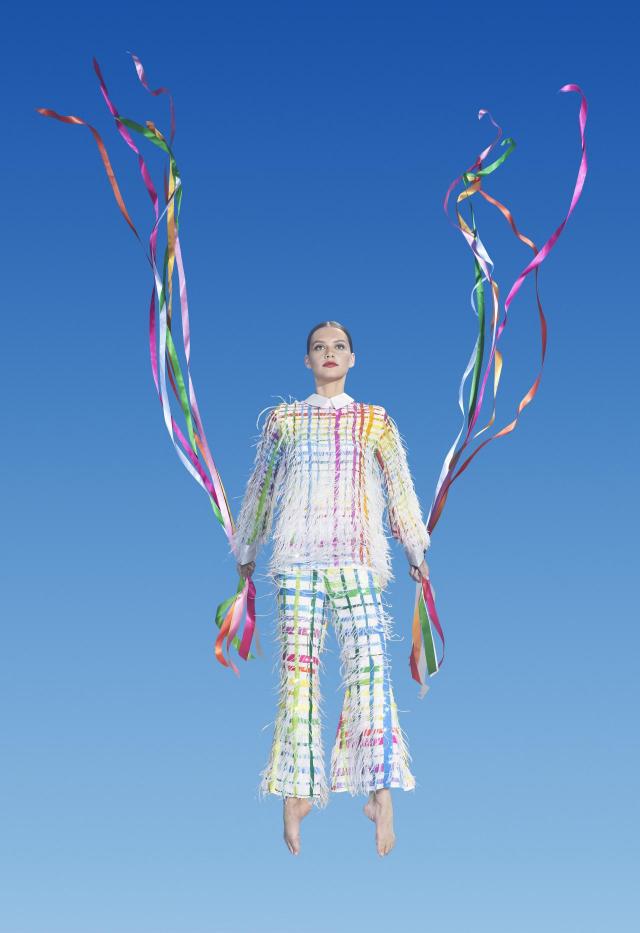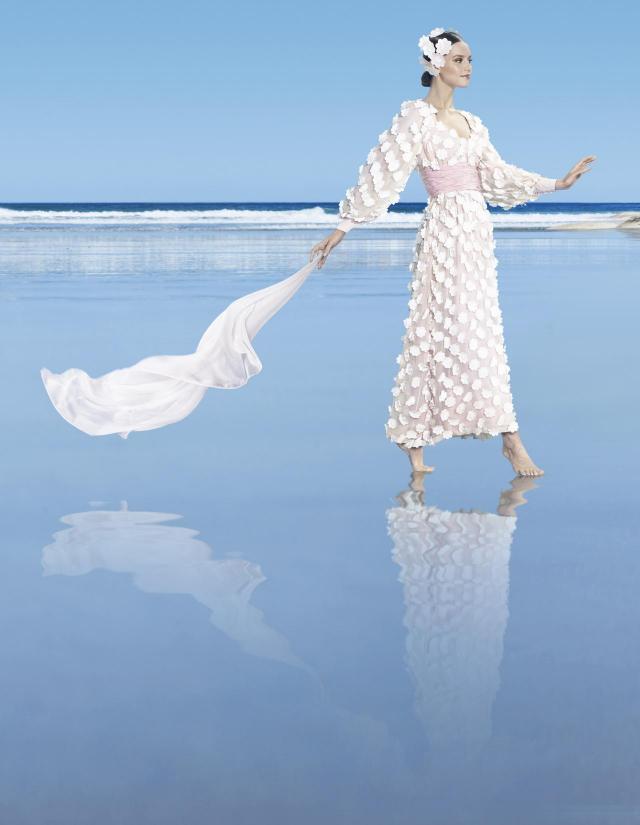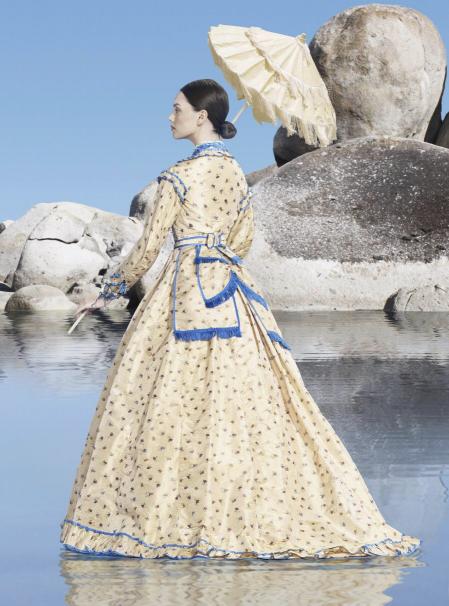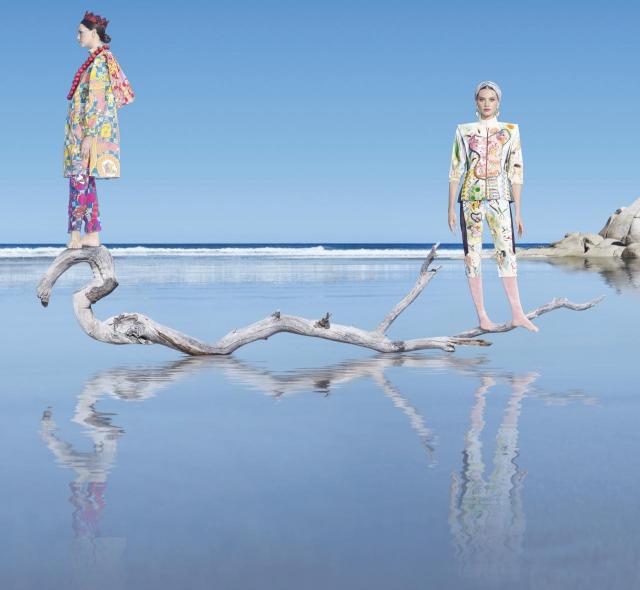At The Ian Potter Centre: NGV Australia, Federation Square
Over 120 works from more than ninety designers are presented in this exhibition – the first major survey of Australian fashion to be undertaken in this country. Since settlement, Australian fashion has been shaped by geographic, seasonal and cultural variants, and defined by colloquial vernacular. In every era, Australian designers have consciously defined the character of how we dress according to local terms of reference. Even today, Australian style can be understood as the by-product of independence and impertinence. From the early dressmaking establishments of Brisbane to the mid-century salons of Collins Street, to the contemporary studios by Bondi’s beaches, 200 Years of Australian Fashion traverses over two centuries of fashion design in Australia.
Staged across four large galleries, 200 Years of Australian Fashion celebrates Australia’s unique voice and impact on the fashion industry internationally, showcasing the work of contemporary designers such as Dion Lee, Ellery, Romance Was Born and Toni Maticevski alongside key designs from the past 200 years, including exquisite examples of historic design.
200 Years of Australian Fashion includes outfits drawn from the collections of the National Gallery of Victoria, the Museum of Applied Arts and Sciences, Sydney and other key collections, as well as a number of essential private loans. The exhibition also includes multimedia footage and interviews, photographs and works on paper. A fully illustrated catalogue accompanies the exhibition.
Program Highlights
The NGV presents a diverse range of programs for 200 Years of Australian Fashion, including opening weekend pop-up design talks and a symposium exploring the question, what is Australian fashion? Curators, designers, practitioners and academics will actively engage audiences in programs throughout the exhibition period including design talks, curator’s perspectives, designer-led workshops, a discussion series and intimate behind the scenes: Fashion Collection sessions.
200 Years of Australian Fashion highlights distinguishing features of Australian fashion through the work of more than ninety designers and makers. From the early dressmakers of colonial Sydney and mid-century salons of Melbourne’s Collins Street to the inner-city studios of contemporary designers, this exhibition considers what and who has defined Australian dress. Australia’s fashion industry has been informed by this country’s geography and resources, as well as by migration and local responses to international trends. Australian designers have responded to these conditions with innovation and ingenuity, humor and irony in dialogue with the wider world. The definition of an Australian designers broad. It is not necessary to have been born here: Australian designers may live here, have travelled here or come of age here.200 Years of Australian Fashion brings together 101 outfits and numerous accessories drawn from the NGV Collection, key institutional and private loans to highlight key moments in Australian fashion history. This broad sweep examines what Australian fashion has been and can be.
Colonial fashion
Few garments are extant from the early period of Australian fashion. As the colony was establishing its cities, infrastructure, industry and culture, fashion items were not always preserved; however, a few precious examples survive. These early works track the beginnings of colonial Sydney society, where dress often functioned to signify status among the few ruling elite. Fashion throughout the Western world at this time was inspired by developments in Paris and London, with fabric often imported from India and China for its fashionable appeal. Because it is close geographically to these centres, Australia was part of a network of international fabric trade from the very beginning. In addition, Australians followed overseas fashion through letters to relatives, magazines and newspaper reports. When the gold rush struck in the mid nineteenth century, an influx of inhabitants from all over the world flocked to Melbourne, which became one of the richest cities in the world and, arguably, the most fashionable.

House of Stripes, Melbourne (fashion house); Peter Langham (designer)
Silver dress 1966
synthetic fibre

Romance Was Born, Sydney (fashion house); Anna Plunkett (designer); Luke Sales (designer)
Rainbow tartan feather suit, 2015 spring, Coo-ee couture collection
silk, plastic (sequins), feathers (ostrich)

Magg, Melbourne (fashion house); Zara Holt (designer)
Evening outfit c. 1974
silk, cotton, nylon, viscose rayon

Bright & Hitchcocks, Geelong, Victoria (manufacturer and retailer)
Day dress 1865–70
silk, glass, baleen

(left to right)
Plain Jane, Melbourne (fashion house); Gavin Brown (designer)
Indian snakes and ladders outfit 1985
screenprinted cotton, metal, plastic, wood
Katie Pye Studio, Sydney (fashion house); Katie Pye (designer)
The party 1980
cotton, metal, synthetic polymer paint
Key Words
Australian fashion, Fashion evolution
0Like
Report
Share
Related recommendation
- • 形象气质培训课教你说话办事
- • 如何成为一个优雅的女人
- • 苏州形象圈告诉您吃西餐的礼仪
- • 涉外礼仪知多少
- • 2016年三大形象礼仪讲师排行榜
Latest News
- • 测试发布者
- • 测试发布者
- • 测试
- • 测试
- • 上海新闻测试
